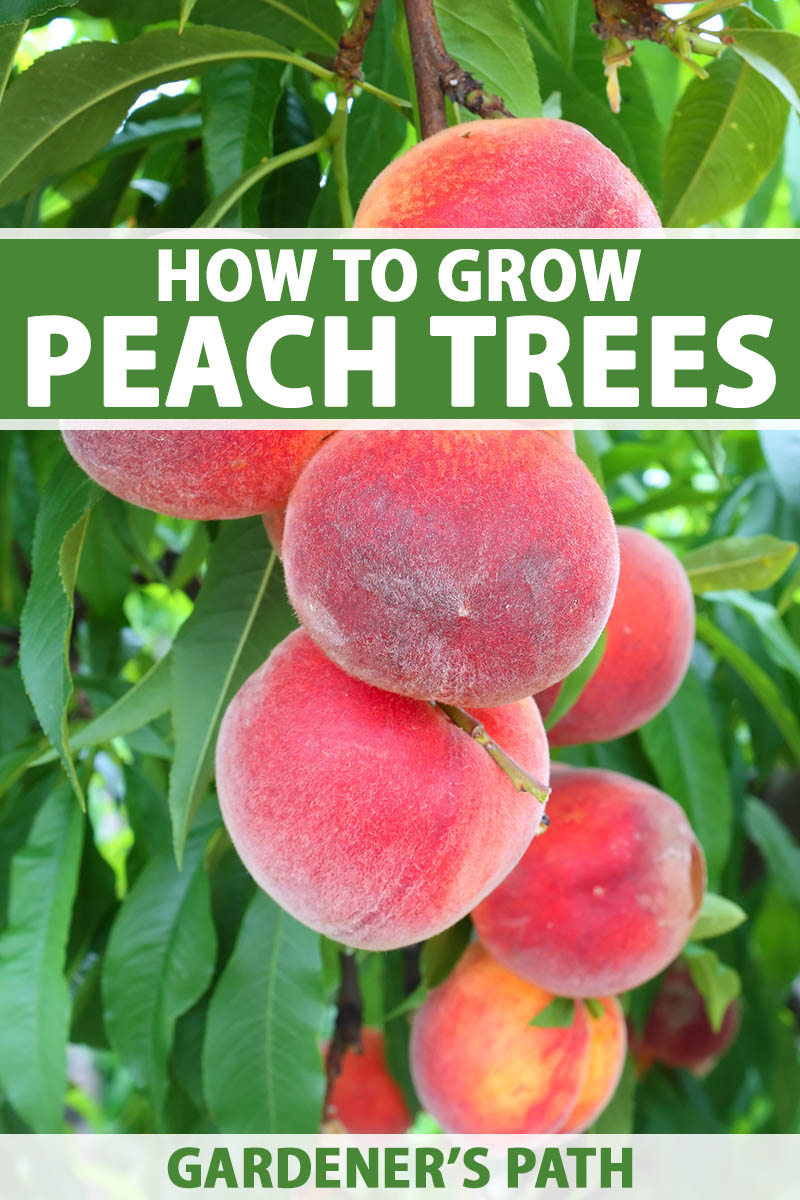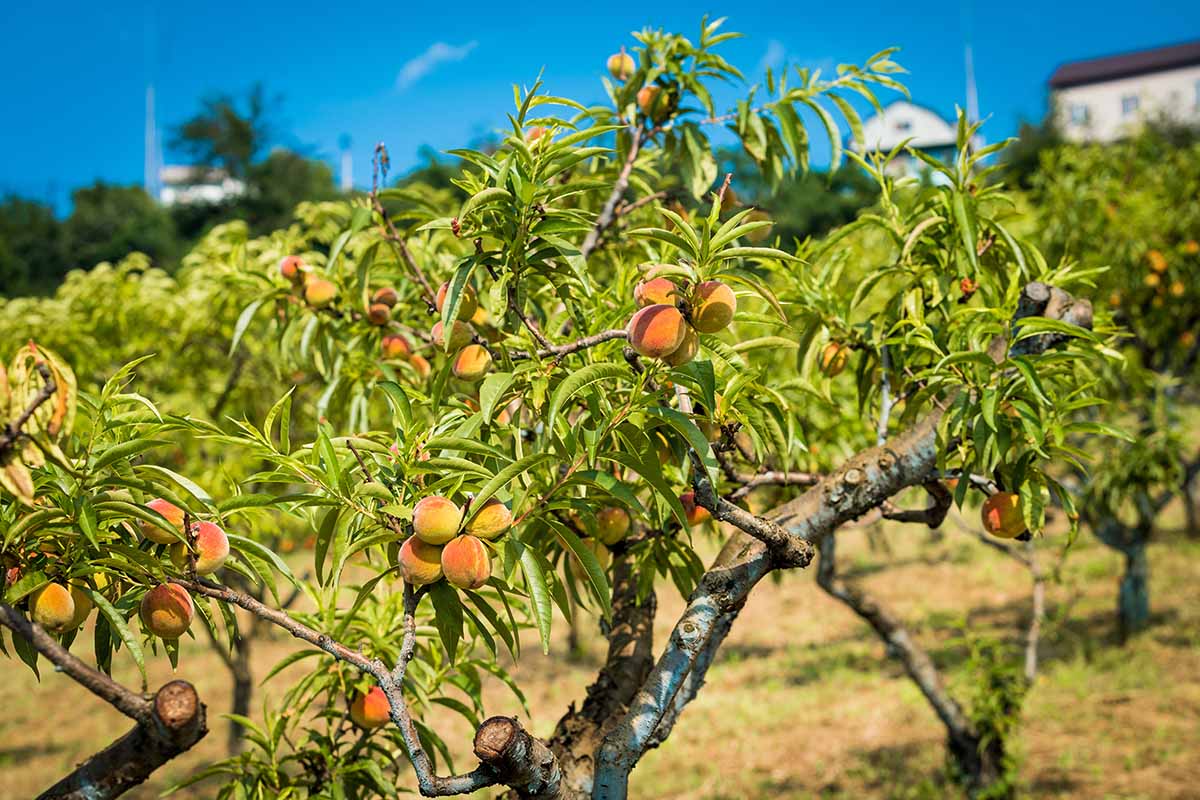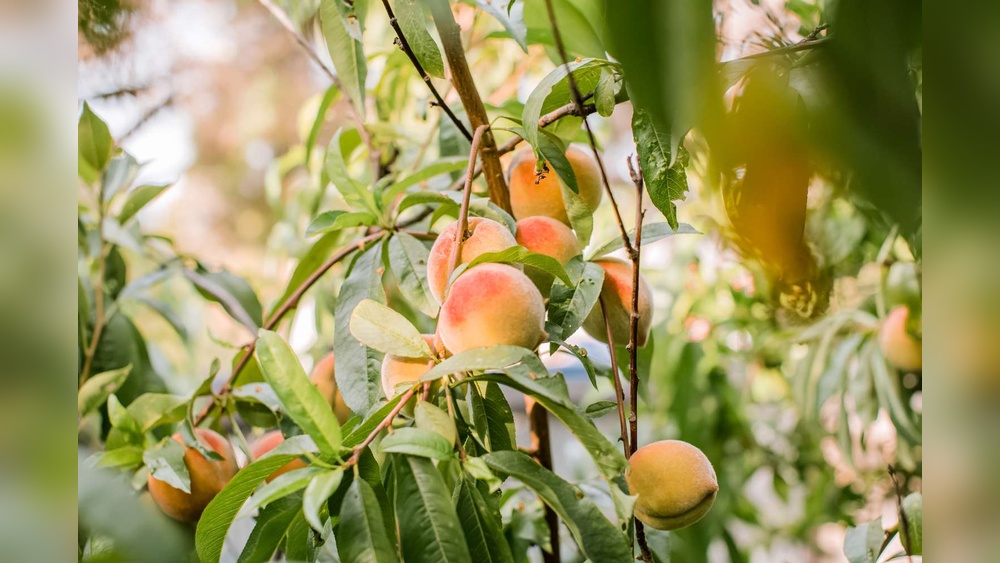As an Amazon Associate, I earn from qualifying purchases.
If you want your peach trees to thrive and reward you with juicy, delicious fruit year after year, knowing how to care for them is key. Peach trees need the right balance of water, pruning, feeding, and protection from pests to stay healthy and productive.
Whether you’re planting your first tree or looking to improve your current care routine, this guide will walk you through the simple, effective steps you can take to keep your peach trees strong and fruitful. Stick with me, and you’ll soon be enjoying homegrown peaches that taste just like summer.

Choosing The Right Peach Tree
Choosing the right peach tree is the first step toward a fruitful garden. Picking a tree suited to your climate and soil can save time and effort. It helps the tree grow healthy and produce delicious peaches year after year. In Austin, Texas, certain varieties and rootstocks perform better due to the local weather and soil conditions. Understanding these options makes a big difference in your peach tree’s success.
Selecting Varieties For Austin Climate
Austin’s hot summers and mild winters require peach varieties that can handle heat and occasional cold snaps. Look for low-chill varieties since Austin has fewer cold days. Varieties like ‘Harvester,’ ‘La Feliciana,’ and ‘TexPrince’ thrive here. These types bloom later to avoid frost damage in early spring. They also resist common diseases found in Texas. Choosing the right variety means better fruit yield and less tree stress.
Rootstock Options
Rootstocks affect how well your peach tree adapts to soil and pests. In Austin, consider rootstocks that tolerate clay soils and dry spells. ‘Lovell’ rootstock is popular for its drought resistance and strong growth. ‘Nemaguard’ helps with nematode problems in the soil. The rootstock also influences tree size, disease resistance, and fruit quality. Selecting the right rootstock supports a healthy tree and easier care.
:max_bytes(150000):strip_icc()/how-to-grow-and-care-for-peach-trees-4589455-12-700624d9c45f4bdc9d796330a966f2d7.jpg)
Planting Your Peach Tree
Planting your peach tree is the first step to enjoying fresh, juicy peaches. Choosing the right place and planting it correctly helps the tree grow strong. A healthy start means better fruit and less work later. Follow these guidelines for the best results.
Ideal Location And Soil Preparation
Pick a sunny spot with at least six hours of direct sunlight daily. Peach trees need warmth to produce sweet fruit. Avoid low areas where water can collect and cause root problems.
Check the soil drainage before planting. Sandy, loamy soil with good drainage is best. Heavy clay or waterlogged soil can harm the roots.
Prepare the soil by loosening it to about 12 inches deep. Mix in organic compost or aged manure to add nutrients. This helps the tree get off to a strong start.
Test the soil pH and aim for a slightly acidic to neutral range, around 6.0 to 7.0. Adjust the pH with lime or sulfur if needed before planting.
Proper Planting Techniques
Dig a hole twice as wide and just as deep as the root ball. This gives roots room to spread easily. Remove the tree from its container gently to avoid root damage.
Place the tree in the hole so the graft union (the swollen area near the base) sits about 2 inches above soil level. Planting too deep can cause rot.
Backfill the hole with soil, pressing it down firmly but gently to remove air pockets. Water the tree well after planting to settle the soil around the roots.
Add a 2-3 inch layer of mulch around the base but keep it a few inches away from the trunk. Mulch helps keep moisture in and weeds out.
Watering Needs
Proper watering is vital for healthy peach trees. Water helps trees develop strong roots and produce juicy fruit. Both young and mature trees have different watering needs. Understanding these needs ensures your peach tree thrives in Austin’s climate.
Establishing Young Trees
Young peach trees need frequent watering to grow well. Water them deeply two to three times a week. This helps roots spread and take in nutrients. Avoid overwatering; soil should be moist but not soggy. Use mulch around the base to keep moisture in. Reduce watering in cooler months when growth slows.
Watering Mature Trees
Mature peach trees require less frequent but deep watering. Water once a week during dry spells. Ensure water reaches the root zone, about 12 to 18 inches deep. Avoid watering leaves to prevent diseases. Mulching helps conserve water and control weeds. Adjust watering based on rainfall and soil type to keep trees healthy.
Fertilizing Schedule
Maintaining a proper fertilizing schedule is vital for healthy peach trees. Fertilizer provides essential nutrients that support growth, fruit production, and disease resistance. Understanding the right fertilizer types and timing helps your tree thrive and produce juicy peaches year after year.
Choosing Fertilizer Types
Select a balanced fertilizer with equal parts nitrogen, phosphorus, and potassium. A common ratio is 10-10-10 or 8-8-8. Young trees benefit from a fertilizer higher in nitrogen to encourage leaf and branch growth. Mature trees need more potassium to improve fruit quality and size. Organic options like compost or well-rotted manure also enrich the soil and improve its texture.
Timing And Application
Apply fertilizer in early spring before new growth starts. This timing gives nutrients when the tree needs them most. Avoid fertilizing late in the season to prevent new growth that can be damaged by frost. Spread fertilizer evenly around the tree’s drip line, where roots absorb nutrients best. Water the area well after applying to help nutrients soak into the soil. A second light feeding after harvest can support root health and prepare the tree for winter.
Pruning For Health And Fruit
Pruning peach trees is essential for keeping them healthy and productive. Proper pruning helps sunlight reach the inner branches. It also improves air circulation, reducing diseases. Pruning shapes the tree and encourages strong fruit growth. This section covers key pruning tips for different seasons.
Dormant Pruning Tips
Prune peach trees during late winter while they are dormant. Remove dead, damaged, or crossing branches first. Cut back one-third of last year’s growth to promote new shoots. Open the center of the tree to let light inside. Use sharp, clean tools to make smooth cuts. This helps the tree heal quickly and lowers infection risks.
Summer Pruning Techniques
Summer pruning controls tree size and improves fruit quality. Trim long shoots to focus energy on fruit development. Remove water sprouts and suckers growing from the base. Thin crowded branches to increase airflow and light exposure. Avoid heavy pruning in summer to prevent stressing the tree. Light pruning keeps the tree balanced and healthy.

Pest Management
Pest management is vital for healthy peach trees in Texas. Pests can damage leaves, fruit, and branches. Early detection helps save the tree and fruit yield. Regular inspection keeps pests under control. Combine different methods for best results.
Common Peach Tree Pests In Texas
Several pests affect peach trees in Texas. Peach twig borer bores into shoots and fruit. Oriental fruit moth attacks young shoots and fruits. Aphids suck sap, causing leaf curl and weakening trees. Plum curculio lays eggs in fruit, causing damage. Scale insects attach to bark and leaves, reducing tree vigor. Spider mites cause yellowing and leaf drop in dry weather.
Organic And Chemical Control Methods
Organic methods include spraying neem oil or insecticidal soap to control aphids and mites. Introducing beneficial insects like ladybugs reduces pest numbers naturally. Removing and destroying infested fruit limits pest spread. Chemical insecticides help control severe infestations. Use products labeled for peach trees and follow instructions carefully. Dormant oil sprays in winter kill overwintering pests. Apply insecticides at bud break and petal fall for best effect.
Disease Prevention
Preventing diseases is crucial for healthy peach trees. Diseases can damage leaves, fruit, and branches. Early care helps stop infections from taking hold. Using proper sprays at the right time keeps your tree strong. Regular treatments reduce the chance of pests and fungi.
Applying Dormant Oil Sprays
Dormant oil sprays kill overwintering pests and eggs. Apply them in late winter before buds open. Cover all branches and trunk thoroughly. This spray smothers insects hiding in the bark. Use a sprayer for even coverage. Avoid spraying during freezing weather. Repeat yearly to maintain tree health.
Fungicide Use At Key Growth Stages
Fungicides protect peach trees from common fungal diseases. Apply them at bud break to prevent early infections. Use another spray at petal fall for extra protection. Common fungicides include copper-based products and chlorothalonil. Follow label instructions to avoid harming the tree. Timely spraying reduces leaf curl and brown rot risks.
Spray Timing And Safety
Proper spray timing and safety are crucial for healthy peach trees. Spraying at the right time controls pests and diseases effectively. It also protects the tree and surrounding environment. Knowing when and how to spray keeps your tree strong and productive.
Late Fall And Early Spring Treatments
Spraying in late fall and early spring helps prevent many common peach tree problems. Use dormant oil or copper-based sprays during these times. Dormant oil kills overwintering insects and eggs. Copper sprays control fungal diseases before buds open. Apply sprays before buds swell to avoid damage.
Avoiding Sprays During Bloom
Never spray chemicals while peach trees are blooming. Sprays can harm bees and other pollinators. Pollinators are vital for fruit development. Spraying during bloom risks fruit drop and poor harvest. Wait until after petals fall before spraying insecticides or fungicides.
Following Label Instructions
Always read and follow product label instructions carefully. Labels provide safe application rates and timing. They include warnings about toxic effects and protective gear. Use only approved sprays for peach trees. Follow pre-harvest intervals to avoid chemical residue on fruit.
Harvesting And Post-harvest Care
Harvesting and post-harvest care are key to enjoying fresh peaches from your tree. Proper timing and gentle handling keep the fruit tasty and fresh. Taking care after picking also helps extend the life of your harvest. This section guides you through identifying ripe peaches and tips for handling and storing them.
Identifying Ripe Fruit
Peaches are ripe when they have a deep, golden color. The skin should give slightly when pressed gently. A sweet aroma near the stem signals readiness. Avoid peaches with green patches or hard spots. Picking at the right time ensures the best flavor and texture.
Handling And Storage Tips
Handle peaches with care to avoid bruising. Use both hands to pick fruit gently from the tree. Store peaches at room temperature if they are not fully ripe. To slow ripening, place ripe peaches in the fridge. Keep them in a single layer to prevent damage. Use peaches within a few days for best taste and freshness.
Troubleshooting Common Problems
Troubleshooting common problems in peach trees helps keep them healthy. Early detection of issues prevents serious damage. Regular checks for signs of trouble save time and effort. Knowing what to look for guides proper care steps. Here are key problems and solutions for peach tree care.
Signs Of Nutrient Deficiency
Leaves may turn yellow or pale green if nutrients lack. Slow growth and weak branches also indicate deficiency. Look for spots or curling leaf edges as warning signs. Fruit may be small or taste bland without enough nutrients. Soil testing helps identify which minerals are missing. Use balanced fertilizer designed for fruit trees to correct problems. Apply fertilizer in early spring and mid-summer for best results.
Addressing Pest And Disease Damage
Peach trees face threats from insects like aphids and borers. Check leaves and branches for holes, sticky residue, or webbing. Diseases such as peach leaf curl cause distorted, discolored leaves. Remove and destroy affected leaves to limit spread. Use organic insecticides or horticultural oils for pest control. Spray during dormant season and at bud break to protect trees. Keep trees well-watered and pruned to reduce stress and disease risk.
Frequently Asked Questions
How Do You Keep Peach Trees Healthy?
Keep peach trees healthy by pruning annually during dormancy, watering regularly especially in the first three years, and fertilizing consistently. Control pests and diseases with appropriate sprays at key growth stages. Ensure good air circulation and remove fallen debris to prevent infections.
What Do You Spray On Peach Trees?
Spray peach trees with dormant oil in winter to control insect eggs. Use copper-based fungicides early spring to prevent diseases. At petal fall, apply fungicides like captan and insecticides such as malathion to manage pests. Follow label instructions for safe, effective application.
What Time Of Year Do You Cut Back A Peach Tree?
Prune peach trees in late winter, just before bud break. This timing promotes healthy growth and better fruit production.
Do Coffee Grounds Help Peach Trees?
Coffee grounds can improve soil texture and add nutrients for peach trees. Use them sparingly to avoid acidity issues.
How Often Should I Water Peach Trees For Best Growth?
Water young peach trees deeply once a week during dry periods. Mature trees need less frequent watering.
Conclusion
Caring for peach trees takes time and attention. Water them well, especially young trees. Prune yearly to keep branches healthy and strong. Use sprays carefully to protect from pests and diseases. Watch your trees often for any signs of trouble.
Healthy trees will produce sweet, juicy peaches. Enjoy the process and the tasty rewards. Growing peach trees can be simple with the right steps. Keep learning and your garden will flourish.

